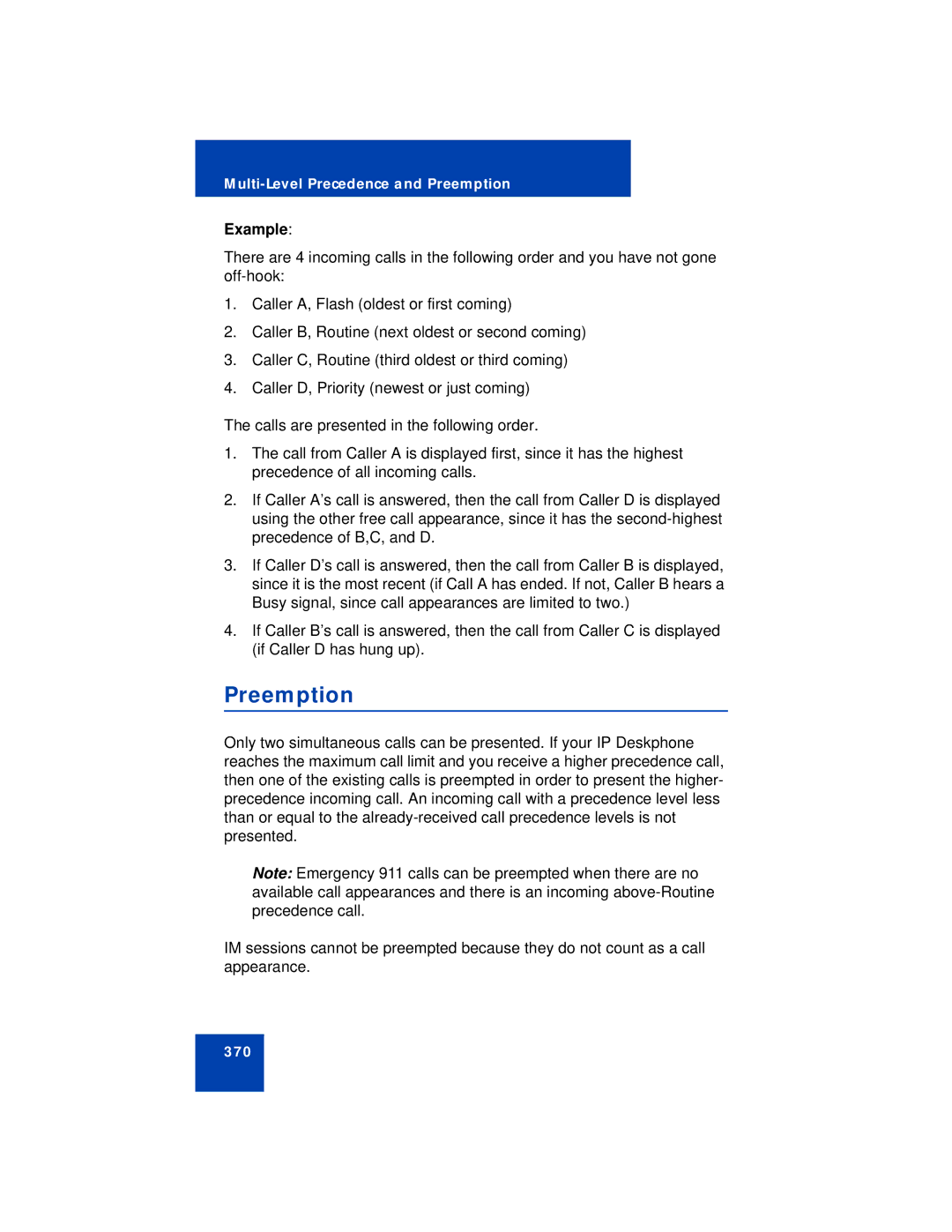
Example:
There are 4 incoming calls in the following order and you have not gone
1.Caller A, Flash (oldest or first coming)
2.Caller B, Routine (next oldest or second coming)
3.Caller C, Routine (third oldest or third coming)
4.Caller D, Priority (newest or just coming)
The calls are presented in the following order.
1.The call from Caller A is displayed first, since it has the highest precedence of all incoming calls.
2.If Caller A’s call is answered, then the call from Caller D is displayed using the other free call appearance, since it has the
3.If Caller D’s call is answered, then the call from Caller B is displayed, since it is the most recent (if Call A has ended. If not, Caller B hears a Busy signal, since call appearances are limited to two.)
4.If Caller B’s call is answered, then the call from Caller C is displayed (if Caller D has hung up).
Preemption
Only two simultaneous calls can be presented. If your IP Deskphone reaches the maximum call limit and you receive a higher precedence call, then one of the existing calls is preempted in order to present the higher- precedence incoming call. An incoming call with a precedence level less than or equal to the
Note: Emergency 911 calls can be preempted when there are no available call appearances and there is an incoming
IM sessions cannot be preempted because they do not count as a call appearance.
370
